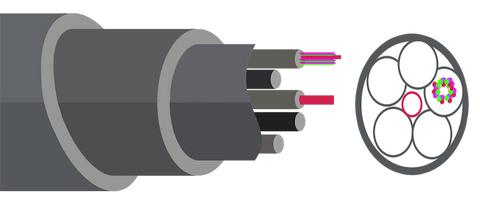Signal Booster News
Microduct Solution Benefits for Broadband & Cable Operators
May 20, 2016
Cable and broadband operators must improve their network architectures to keep up with the data demands of subscribers. One way to achieve this is to push fiber deeper into networks. The cost of reconstructing and/or building networks is however very challenging. Operators can however meet their infrastructure needs, create new growth, and reduce future construction costs by deploying microducts. Microducts are tiny conduits that house microcables. Typical microduct sizes included 10 mm, 12.7 mm and 16 mm in which up to 144 fibers can be housed. Microducts can be used in fiber-to-the-business (FTTB), fiber-to-the-home (FTTH), backhaul, long-haul and premise fiber deployment....
Structured Cabling for Improved Design, Installation, Maintenance
May 19, 2016
Imagine that you did not have distributed power and power outlets in your home and office. This would mean that every time you wanted to connect a new device like a desk light or a printer to power, you would have to run an extension cord down to the breaker panel which is often located in the basement. The first IT networks were connected in this way with patch cords. Structured cabling and standards governing these were developed later to make life a lot easier. Structured cabling can be defined as a cabling infrastructure that offers a standardized and organized method...
Internet of Things (IoT) Machine to Machine (M2M) Connections
May 18, 2016
IoT consists of meters, sensors and other machines connected to a network to generate efficiency and value across numerous applications. These machine to machine (M2M) connections will add network data loads that will create power, latency and capacity issues. Our M2M cellular boosters merely boost those mobile connections between machines that are inter-connected. Sensors can for example be deployed through a building to report on lighting, heating and other ambient conditions. A more complex example would be a surgeon performing a remote operation getting a precise location for the incision from sensors in the body, and also using a robotic...
Industry Standards Help System Designers, Installers, Integrators
May 16, 2016
Standards are used in most industries and govern a diverse range of things including protocols, designs and materials. Standards are implemented to make things easier for a specific industry. Industry Standards used in telecom industry govern its protocols, designs, and materials which help systems designers, manufacturers, installers in their work that ultimately helps end users. In the cabling industry, things might seem complex and frustrate some if one looks at the numerous regional cabling standards, applications standards and unofficial guidelines. All of these will influence the design and usage of cabling systems. The sheer volume of documentation seems to negate...
Network Densification for Carrier Network Capacity & Speed
May 13, 2016
The wireless industry often uses the term network densification. As the use of smartphones and tablets increases steadily, subscribers need more wireless network resources than ever before and that consumption continues to increase. To be able to handle all the traffic while delivering on user's expectations for network speeds, operators have to continuously increase the capacity of their networks. Network densification is a way in which this can be done. Capacity can be added in three different ways: Buy more spectrum, increase the efficiency of that spectrum, and network densification. The latter simply means increasing the capacity by adding more...






